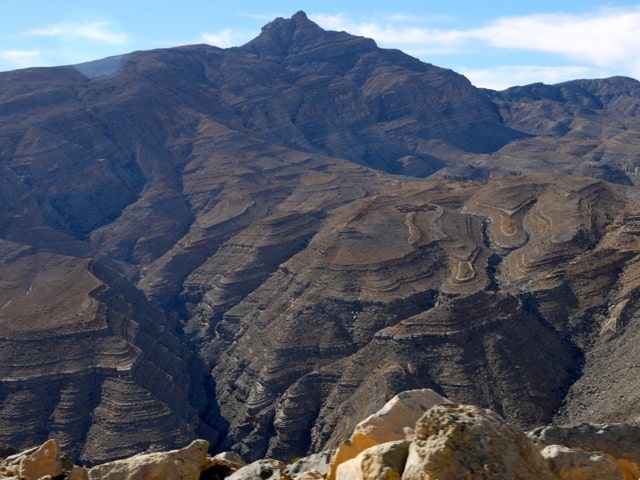If you look at an aerial map of the Arabian peninsula, you could imagine that a fiendish dragon or dinosaur had laid its weary head down to sleep on the soft, warm sand and fallen asleep. Over the years the wind blew the sand dune over its sleeping body like a blanket, leaving only the spiny backbone visible from the sky.
That is how I like to see the Al Hajar Mountains, which stretch more than 500 kilometres from the Omani tip in Musandam, crossing through the United Arab Emirates to the most easterly point of Oman near the fishing village of Sur.
This weekend’s adventure started on one side of the mountains, and ended on the other, without actually going over the top, which obviously would have been the more direct route.
When we have the opportunity we like to escape Dubai, with its technologically advanced skyscraper landscape, to find ourselves in the hills. With the help of a babysitter, we left the children at home for a short overnight trip to take part in a running race to the top of Wadi Bih, near Dibba, Oman. More than 75 kilometres of wadi bashing on foot for fun. However, before our race could begin our first hurdle was not getting across the mountains but getting across the border.
Sharjah authorities now demand that UAE residents present proof of a hotel stay or booking with a dhow operator to enter Oman at this crossing, so if you plan to camp you may face some challenges. We had given our passport details to the race organisers who did everything they could to smooth the path, but regardless we were turned back at the border until we had found a policeman wandering around with our name on his list. Now you may think that we would have to prove our identity and we would be stamped or given of permission slip to pass thorough the iron gates of bureaucracy. No. I pointed to the list, and said: “That’s me.” The policeman said: “Tell the guard Khalid said it’s ok.” And that was it.
This is not even a visa issue. If you hold a tourist visa, rather than a resident’s visa you’re exempt. So the reason for the change in crossing logistics is unclear. It could be to stop people with debts absconding and escaping by boat, but seeing as the Strait of Hormuz is the watery home of pirates, smugglers and Iranian sailors, it’s not a great route, especially when you can head to Muscat with no problems.
All that is clear is that local businesses are suffering as adventurous thrill seekers search for rocks and wadis to scramble over somewhere else.
The landscape, though, cannot be tainted by this little hiccup. The powerful dragon lies sleeping peacefully on the beach, and did not react when we tickled him by running up and down his spine. The views are spectacular. The strata of the rock wiggles its way uphill ending in a rainbow of colour. It’s almost worth running the 35 kilometres or so up to the top just for the view.
Frustratingly the border restrictions mean you have to return via the same border post. There is a gravel track that runs from Dibba through the Musandam peninsula to Khasab and forks to link up with Ras al Khaimah. But the route is closed unless you are an Omani or UAE national.
So we returned to Dubai. In fairness we had to pick up the children anyway.
(Continues…)




1 thought on “Riding the Arabian dragon’s spiny backbone (first part)”